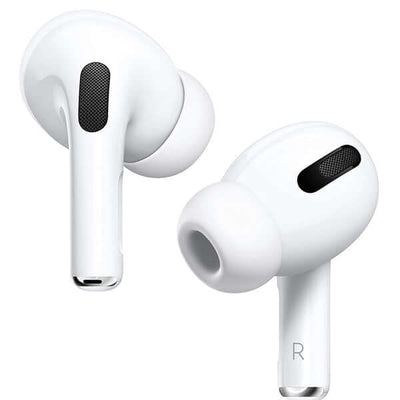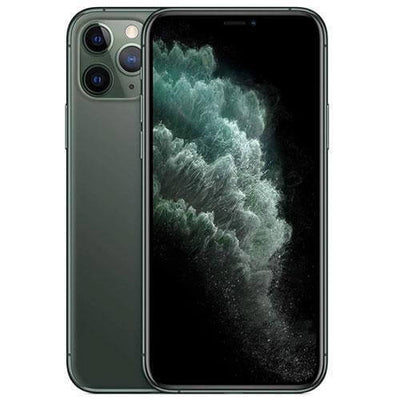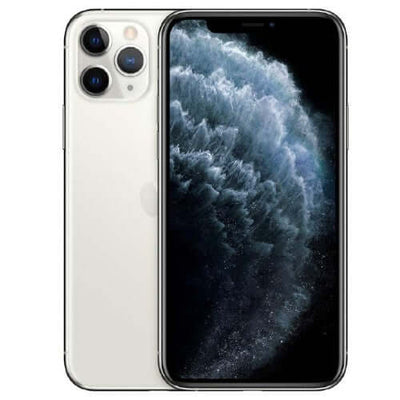Introduction
With Samsung's Galaxy Fold and Huawei's Mate X now in the public's independent hands, 2019 will prove to be the year youand #39;re finally able to get your hands on foldable smartphone hardware. As the tech world anticipates Apple's possible competition with an equivalent product, either one of these devices provides a significant look into the future of the company's mobile technology. SuperSaf TV spotlights some of those key differences between the two, highlighting some unique features and capabilities of each. With foldable smartphones heating up as a competitor for dwindling consumer interest, it provides an amazing time for anyone in the market for a new product, with options that likely provide a variety of benefits over their rivals.
Throughout this article, weand #39;ll be breaking down some of the most important aspects of the Samsung Galaxy Fold and the Huawei Mate X -- with a little of the important features that both have in common, as well as the distinct characteristics that might make your purchasing decision a lot more difficult.
Key Differences in Foldable Devices
Fold Type and Display Size:
The Samsung Galaxy Fold has a main 7.3-inch Infinity Flex AMOLED display on the inside and a 4.6-inch cover display. The Huawei Mate X has a main 8-inch OLED display extending to a 6.6-inch display when folded and a back 6.3-inch display. – The Galaxy Fold’s main display is completely protected when the phone is closed. The Mate X’s is partially exposed, but affords bigger overall screen real estate and thinner bezels. – The Mate X also has that distinct sidebar that serves as a grip while the phone is fully opened, and includes the cameras, without need for any notches or cutouts.
Internal Hardware and Software:
The Galaxy Fold features a Qualcomm Snapdragon 855 processor, 12 gigabytes of RAM and UFS 3.0 storage, allowing for quicker speeds and ease of app optimization; Samsung's very own OneUI will also provide a smooth user experience. In contrast, the Mate X is equipped with a Kirin 980 processor, 8 gigabytes of RAM, and Huawei's EMUI. Both run on Android Pie, but Samsung has reportedly been working closely with Google and app developers to make certain that the Galaxy Fold can run multiple apps at once with app continuity.
Camera Setup and Battery:
Galaxy Fold includes a total of six cameras, including a triple rear camera setup — just like the non-5G S10 (12-megapixel dual-pixel main lens, 12-megapixel telephoto, 16-megapixel ultra wide) — and additional front-facing and depth sensors. It also supports three-app multitasking on its larger display.
The Mate X features three cameras and can use the rear-facing cameras for selfies, leveraging the rear display for enhanced photography and viewing.
As for batteries, the Mate X has a combined capacity of 4500mAh and is topped up by Huawei's 55-watt SuperCharge, which again claims rapid charging capabilities. For its part, the Galaxy Fold supports wireless charging and Wireless PowerShare for juicing up other devices.
Pricing and Availability:
Samsung's Galaxy Fold is set to launch at $1980, with a standard and 5G version, while the Mate X is priced at around 2,300 euros for the 5G Edition. The release dates for both devices are staggered, with the Galaxy Fold arriving earlier than the Mate X. As we continue to see the foldable smartphone landscape take shape, it's clear that both the Samsung Galaxy Fold and the Huawei Mate X each offer distinct advantages. Whether it's the type of fold, the build, internal hardware, camera capabilities or price, each device offers a compelling proposition for consumers looking to take the next step in mobile technology.
Design and Display
Samsung Galaxy Fold and Huawei Mate X have different designs with what traditional smartphones and tablets look like traditional notebook computers. Folded into a 4.6-inch cover display, the Galaxy Fold features an innie fold with a 7.3-inch Infinity Flex AMOLED display on the inside. On the other hand, Huawei's Mate X has an outie fold: 8-inch OLED screen which folds out to 6.6 inch length and 6.3" display for reading. Each design has its advantages and disadvantages. For instance, Galaxy Fold is more protective of the inner display but Mate X allows that screen to be bigger and has a smaller edge around it. The sidebar of the Mate X brings a new shape to the table when applied to a simple, cohesive but unadorned looped design.
Internal Hardware and Software
Internally, the Galaxy Fold has a Qualcomm Snapdragon 855 processor, 12GB of RAM and UFS 3.0 storage for faster performance and better app optimization. Samsung's OneUI is also in tow for a seamless user experience. The Mate X has Huawei's Kirin 980 processor, 8GB of RAM and Huawei's EMUI. Both devices run on Android Pie, but Samsung has worked with Google and app developers to adapt the Galaxy Fold for multitasking and app continuity. On top of that, that massive display is able to run three-app multitasking. So in terms of software abilities, the Galaxy Fold has an edge. Wireless charging and Wireless PowerShare for charging other devices are supported on the Galaxy Fold; the Mate X supports Huawei's 55-watt SuperCharge, so it can charge quickly.
Camera Setups
Tapping into different styles, the Huawei Mate X and the Samsung Galaxy Fold are both unique in their camera configurations. Let's break down whether you want a sweeping panoramic shot or just some flowers near the top.
Number of Cameras:
-Distinctions of the Galaxy Fold: it boasts six cameras in total, including a triple rear camera system and front- and depth cameras.
- This rich camera configuration supports three-app multitasking on the larger screen and provides a huge range (promised by amount) of photography possibilities.
- On the other hand... May X...just three cameras, and with all these combinations at your disposal. Plus: don't think that you have to hold camera this far away from yourself! You can put the rear-screen displays into some great (picture-related) positions.
Camera Quality and Features:
• When it comes to the camera, both devices give you access to some of the best there are. The Mate X’s camera system is somewhat reminiscent of the one used by the Mate 20 Pro, while the Galaxy Fold has a triple camera system that is similar to the setup found in the Galaxy S10. However, the Mate X has an interesting method of using the rear-facing cameras as front-facing ones. This can give you extremely high-quality selfies, if you have a good enough reason to need them.
Battery and charging:
• On the charging front, you've got Huawei SuperCharge at 55 watts, making the company's charging method pretty fast, with an 85% claim in just 30 minutes. Over on Samsung's Galaxy Fold, you have wireless charging if you want, with Wireless PowerShare meaning you can charge pretty much any other device with your Galaxy Fold. There's no such thing as a 5G network that's available to any of us at the moment, and in the UK it's definitely not "viable". All that said, camera and charging features make both the Huawei Mate X and the Samsung Galaxy Fold quite the lookers when you put aside their folding pretensions.
• These features are key to the initial appeal of just what a folding phone could look like in 2019.
• They're the kind of flexibility you're not going to get in a current-generation folding phone, and they could significantly differentiate both devices in a market where it's likely we'll see 10 different kinds of folding phone designs within 2 years.
• They're both working combinations of those core features, with the core feature being the magical screen folding feat.
Battery and Charging
Each device offers distinct features, depending on your needs and which version of charging you prefer.Of note, the Samsung Galaxy Fold and Huawei Mate X both employ a dual-battery solution, with one battery on each side of the fold. But the overall battery design will differ between them as the Mate X features an overall larger battery size that should be able to accommodate the size of the larger display with a little less compromise to how long you can keep the folding phone out of the wall socket.Huawei's Mate X also features the 55-watt SuperCharge. This is an impressive design if it truly takes it to 85% charge in 30 minutes. Keep in mind fast-charging solutions from competing products from LG and Samsung are only just getting up over 40 watts from the wire.
Wireless Charging and PowerShare
But that's not all: the Wireless PowerShare function means as a Galaxy Fold owner you can charge your other devices easily without looking for cables. In summary, the Huawei Mate X and the Samsung Galaxy Fold have exclusive battery and charging functions: there are a variety of options for users to choose from depending on their personal preferences or habits As competition for the foldable smartphone market hots up, these unique differences all add to the overall appeal of both models.
Pricing and Release Dates
The Samsung Galaxy Fold is set to launch at $1980, with a regular and 5G version, while the Mate X is priced at around 2,300 euros for the 5G Edition. The release dates for both devices, however, issue out in sequence Galaxy Fold arrives earlier than Mate X even though Samsung's Galaxy Fold is slated to officially hit retail shelves as of the 26th of April in 2019, Huawei's Mate X will go on sale some time next year The price and launch schedule for these devices are important factors in the decision-making process for customers, who must weigh availability and pricing against the fact that these are revolutionary foldable smartphones.
Pros and Cons of Samsung Galaxy Fold
Pros:
Inner display is protected when closed, thus more durable and protective of the fragile screen. Optimized for multitasking and app continuity with ability to run three apps simultaneously on the larger display. Wireless charging and Wireless PowerShare; remaining battery life by simply double tapping on the side of the display; and charging other devices from the back of the Galaxy Fold.
Cons:
Cutout for cameras, negating the all-screen effect Inner display is huge and sure to do it all justice in the end. Screens aside, multiple apps at once is about as multitasky as it gets. 4.6-inch display on the “front,” outside the Galaxy Fold. You can see where the screen ends, and then there are the bezels. It felt only a little bit apologetic. The Wall Street Journal says it will cost Dhs.7,272.34, (base price) which is pretty typical for a sumo wrestler.
Pros and Cons of Huawei Mate X
But unlike Huawei's similar fold-in approach, the Huawei Mate X has a "n outie" fold design, which gives it both an 8-inch OLED display for use and folds down to 6.6 inches as well a 6.3-inch back panel. This rare design effectively gives more screen real estate and less bezels for an all encompassing video view from the operation side. Mate X is also equipped with Huawei's 55-watt SuperCharge capabilities, saying that it can be charged up to 85% in only 30 minutes. This excellent charging level is an efficient way for users to rapidly beef the mobile devices they rely on. Mate X, however, has a drawback--its outside display is never protected. As a result this more likely to scratch and becomes damaged.
Comparison and Conclusion
It is clear when comparing the Huawei Mate X and the Samsung Galaxy Fold that each of them has its own advantage and being handicapped.Catering to different needs, each device shows limitations and novelties. The Galaxy Fold -- with its innie fold design and a sheltered inner display -- provides more durability and protection for this fragile screen.Additionally, the Galaxy Fold has optimized multitasking and app continuity capabilities. And the larger display enables running on three different apps simultaneously.The adding of wireless recharging and Wireless PowerShare (which can extend power to another phone) makes it even more convenient or useful.On the other hand, the Huawei Mate X’s outie fold design offers a larger OLED display with almost invisible bezels. It gives an immersive viewing experience to users.
The user experience is naturally impacted by the visible creases, and the lack of wireless charging is definitely a drawback when compared to other foldable devices. As for pricing, the Mate X isn’t cheap -- the 5G Edition will set you back around Dhs.9,210.92 when it launches, which is a lot of money to invest in a smartphone that is about to become second-gen tech.
All things considered, the Huawei Mate X is a stand-out foldable smartphone that provides an excellent experience. Its wrap-around design and ultra-fast charging and any-eye wateringly expensive price that comes with it make for an interesting combination.
All of that hardware means the Mate X is a middle because. The device's 55-watt SuperCharge offers rapid charging, making sure that you can quickly power up your device on the go. Still, some consumers may balk at the exposed outer display, and the lack of wireless charging. Plus, with the pricing on the 5G Edition, the Mate X is going to represent a serious investment for those that are considering it. Still, the Galaxy Fold, and the Mate X represent a major step in the advancement of foldable smartphones. The unique design elements, hardware specifications, camera capabilities and pricing options are going to offer consumers an amazing amount of choice. As the foldable marketplace continues to grow, it is clear that neither device will be a "one-size-fits-all" offering, and that only benefits consumers.
FAQs
Q1: Do the Samsung Galaxy Fold and the Huawei Matte X have any major differences?
A: In terms of fold type, display size, internal hardware configuration and software capabilities, camera setup, battery charging and price as well as availability, they're nip and tuck. Together, they reflect the influences of South Korean versus Chinese smartphone culture--no surprise given their national origins.
Q2: What are the prices and release dates for the Samsung Galaxy Fold and Huawei's Mate X?
A: The Samsung Galaxy Fold is going for $1980 and you'll be able to order it starting April 26th. Price wise, the Huawei Mate X starts at Dhs 2300 for 5G Edition and will go on sale sometime in the middle part of this year.
Q3: Which among the two devices offers enhanced screen protection?
A: The screen of the Galaxy Fold is made of a polymer and is more safe than that made of e-glass of Mate X. Even though the inner screen screen of Mate X is showcased throughout the device , the screen of the Fold is hidden constantly.




















